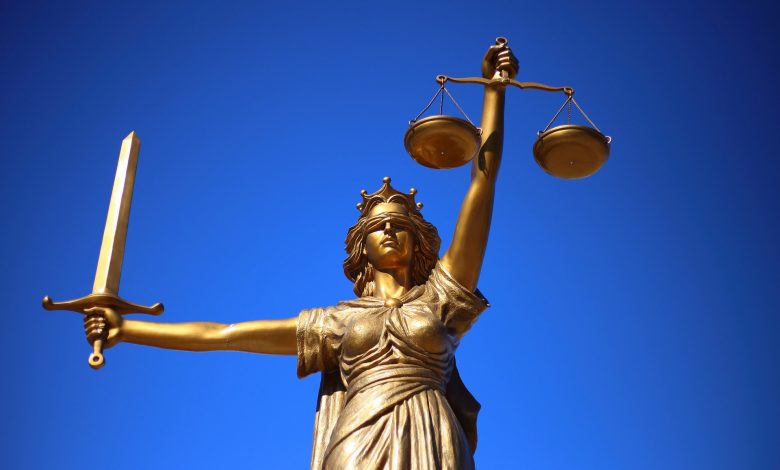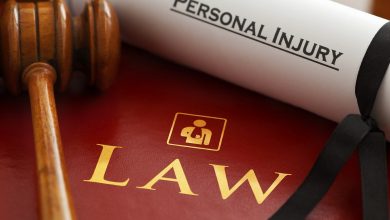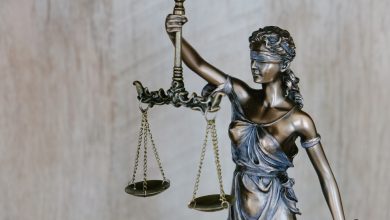9 Famous and Controversial Supreme Court Cases

When you hear of famous Supreme Court cases, you will likely recognize the names, but you also may have no idea what the case was about. If you are interested in the law, you will want to know the history of landmark Supreme Court decisions. Here we will go over nine of the most famous and controversial Supreme Court cases to get an understanding of how certain laws came to be in effect.
What Is the Supreme Court?
The United States Supreme Court shapes the law of the land, and the decisions made by the court set a precedent for future cases. The Supreme Court’s job is to interpret the United States Constitution, which is not always a straightforward task. When a decision is made, it can have a lasting impact on how courts view cases in the future.
How Does the Court System Work?
The United States federal court system includes three levels: district courts, circuit courts, and the Supreme Court.
District courts are considered trial courts because they are the first stop in the court system. After a district court makes a ruling, the first court of appeals is the circuit courts. To appeal further, you would bring a case to the attention of the Supreme Court, which would decide whether or not to hear the case.
Federal courts are much different than state courts due to jurisdiction. The jurisdiction of a federal court is limited to federal statutes or cases that involve interpretation of the United States Constitution.

Marbury v. Madison – 1803
The country was just 27 years old when the landmark decision came in Marbury v. Madison, which established that the Supreme Court had the power of judicial review. What this meant was that the Supreme Court has the power to overrule Congress on laws and statutes that they believe violate the United States Constitution.
The case centered around three famous historical figures: outgoing President John Adams, Alexander Hamilton, and Thomas Jefferson.
John Adams had been defeated by Thomas Jefferson in the presidential election that took place in 1800. Just before his term ended, President Adams announced 42 new circuit judges and justices of the peace, all from his Federalist party.
The United States Senate affirmed Adams’ new appointments on the last day of his term. However, acting Secretary of State, John Marshall, failed to deliver commissions to four of the appointees in time.
In response, Thomas Jefferson advised his Secretary of State, James Madison, to withhold the four commissions. One of these four men was William Marbury, a Federalist and John Adams supporter.
With Madison refusing to commission Marbury to his position, Marbury filed a lawsuit with the Supreme Court.
While the Supreme Court agreed that Marbury was owed the commission and that it was illegal for Madison to withhold it, it did not compel Madison to deliver the commission to Marbury. The Court’s opinion centered around the Judiciary Act of 1789, which allowed Marbury to bring the case to the Supreme Court.
Chief Justice John Marshall delivered the opinion with the famous words, “A law repugnant to the Constitution is void.” The Court’s opinion was that the Judiciary Act of 1789 was unconstitutional because Congress should not have the power to modify the Constitution in a legislative session.
The result of the decision was that the Supreme Court had the right to declare a law unconstitutional.
McCulloch v. Maryland – 1819
The Second Bank of the United States was chartered in Maryland in 1816. In 1818, Maryland decided they deserved to collect taxes from the bank, so they passed legislation to do so.
However, a cashier of the Baltimore branch, James McCulloch, refused to comply with the tax. The case was brought forward to the state appeals court, which argued that the establishment of the Second Bank was unconstitutional and upheld the law to tax it.
In response, the bank appealed to the U.S. Supreme Court in the name of the cashier, James McCulloch.
So there were two factors at play for the Supreme Court to decide:
- Did Congress have the right to charter a bank?
- Did Maryland have the right to tax the bank?
In a unanimous decision, the Supreme Court ruled that, yes, Congress had the right to charter the bank and that Maryland did not have the right to tax it.
The Court ruled that the bank was lawful and under federal authority. Chief Justice John Marshall wrote that the U.S. Constitution gives Congress the right to make all laws, which are necessary and proper, in order to carry out the powers given to Congress in Article I, Section 8 of the Constitution.
Marshall next used Article VI in striking down Maryland’s new law. Article VI of the U.S. Constitution states that “the power to tax involves the power to destroy.” Marshall declared that states “have no power, by taxation or otherwise, to…control the laws of the federal government.” Therefore, the law to tax the bank was void, as it was unconstitutional.

Brown v. Board of Education – 1954
In 1954, the Supreme Court ruled that segregating public schools by race was unconstitutional. This was a massive decision to push forward the civil rights movement at the time, although there was much more work to be done on that front.
The main aspect for the Supreme Court to rule on for this case was the idea of “separate but equal.” This idea came from a Supreme Court ruling in 1896 with the case of Plessy v. Ferguson. At that time, the Supreme Court ruled that segregating a public facility was legal, as long as there were equal facilities for blacks and whites.
What this ruling meant was that it legitimized the “Jim Crow” laws at the time, which barred African Americans from sharing schools, buses, and additional public facilities that were used by whites.
By the 1950s, the NAACP was beginning to challenge the idea of “separate but equal” in public places. And in 1951, the first opportunity to challenge those laws at the federal level came when Oliver Brown filed a lawsuit against the Topeka Board of Education when his daughter was not allowed at the all-white elementary school.
The lawsuit argued that the black schools were not equal to the white schools and referenced the Fourteenth Amendment, which states that a state cannot “deny to any person within its jurisdiction the equal protection of the laws.”
The case first went to the U.S. District Court of Kansas, which simultaneously agreed that segregating schools did have a detrimental effect on African American kids, but at the same time, the court argued that the schools still followed the law of “separate but equal.”
By 1952, there were four other similar cases, and all were combined as a single case to be heard by the U.S. Supreme Court. Before officially hearing the case, the members of the Court were split on how to rule. At the time, Chief Justice Fred Vinson was on the side that the Plessy v. Ferguson ruling of 1896 should stand. But Vinson died before the case was formally heard.
President Dwight D. Eisenhower filled Vinson’s seat with the governor of California, Earl Warren, and the result was a unanimous decision in favor of Brown. The Supreme Court made the ruling official on May 17, 1954, saying that “separate but equal” has no place in public education and that this doctrine violated the Fourteenth Amendment.
The story did not end there, however. The following year, the Supreme Court made a second opinion on the case, which stated that future segregation cases would be handled by lower federal and district courts. The opinion urged all school boards to begin immediately with desegregation. But many school districts in the south ignored this directive.
Famously, in 1957, the Governor of Arkansas, Orval Faubus, ordered the state National Guard to keep African American students from attending a high school in Little Rock. President Eisenhower then ordered federal troops to the school, who protected the nine students, who are now referred to as the “Little Rock Nine,” as they entered the school.
Gideon v. Wainwright – 1963
The case of Gideon v. Wainwright was a landmark decision by the Supreme Court, which stated that access to legal representation was a basic right and was critical to the legal process.
In 1942, the Supreme Court had previously ruled in the decision of Betts v. Brady that not granting a defendant an attorney during a felony case did not violate the Fourteenth Amendment’s clause of due process.
The passage in question reads as follows:
“No State shall make or enforce any law which shall abridge the privileges or immunities of the United States; nor shall any State deprive any person of life, liberty, or property, without due process of law; nor deny to any person within its jurisdiction the equal protection of the laws.”
The origin of this landmark case began in Florida, 1963, when Clarence Gideon was charged with felony breaking and entering. Gideon showed up on his court date without an attorney and requested that the judge grant him one, as he could not afford a lawyer on his own. The judge said no, and the case moved forward with Gideon representing himself.
The court found Gideon guilty, and he was sentenced to five years in jail. However, Gideon petitioned the Florida Supreme Court, arguing that his Fourteenth Amendment right to due process had been violated. But the Florida Supreme Court rejected Gideon’s argument.
The complaint was then brought up to the United States Supreme Court, who agreed to hear the case. And in a unanimous decision, the Supreme Court overturned the Betts v. Brady ruling and declared that Gideon’s Fourteenth Amendment rights had been violated.
This decision was not only one of the most significant rulings the Supreme Court has ever made, but it also opened the door for plea bargaining to become much more prevalent in the courts.
Miranda v. Arizona – 1966
Another case that helped push forward plea bargaining in the United States was Miranda v. Arizona, which led to the creation of “Miranda rights.”
In 1963, Ernesto Miranda was arrested for abducting and raping an 18-year-old woman. After the arrest, police used interrogation techniques that resulted in a confession from Miranda. But the confession was quickly recanted. Due to the confession, Miranda was convicted. But while he was in prison, the American Civil Liberties Union took up his appeal.
The Supreme Court of Arizona upheld Miranda’s conviction, so it was brought forward to the Supreme Court. Three other similar cases were included with Miranda’s. The ruling for the Supreme Court centered around the Fifth Amendment, which protects against self-incrimination. But did that protection extend to a police interrogation?
The Fifth Amendment says that law enforcement must let suspects know that they have the right to remain silent and the right to an attorney. And in a 5-4 decision, the Supreme Court ruled that the interrogations in question violated the Fifth Amendment.
The result of this decision was that suspects must be made aware of their Constitutional rights from the outset of an arrest. Once they are aware, if they choose to waive those rights, a suspect can lawfully incriminate themself.
Loving v. Virginia – 1967
The statute centering around the case of Loving v. Virginia seems preposterous. But it was not that long ago that many states in the U.S. had a law banning interracial marriage. In the history of the U.S., 41 of the 50 states had a law at one time that barred “miscegenation,” which was any marriage or sexual relations between two different races.
In 1958, a white man and a black woman, Mildred and Richard Loving, were married in Virginia. They were sentenced to a year in jail and were told if they left the state and did not return for 25 years that they could avoid the prison sentence.
So Richard and Mildred Loving left Virginia and raised their three kids in exile in Washington, D.C. In 1963, Mildred decided to write a letter to United States Attorney General Robert F. Kennedy, asking for help. Kennedy directed the Lovings to seek out the American Civil Liberties Union, which took on the case.
It took five years, but the case finally reached the Supreme Court in 1967. The Court unanimously agreed that the law banning interracial marriage was a violation of the Fourteenth Amendment, and similar laws were struck down in a total of 16 states.
Roe v. Wade – 1973
The subject of Roe v. Wade is still one of the more controversial political topics today. The question for the Supreme Court was, is a woman’s right to have an abortion recognized by the Constitution?
In 1970, Jane Roe, a pseudonym to protect her true identity, filed a lawsuit against the district attorney of Dallas County, Texas, Henry Wade. The lawsuit argued the Texas law that made abortion illegal unless to save a woman’s life violated Roe’s First Amendment, Fifth Amendment, Ninth Amendment, and Fourteenth Amendment rights to privacy.
The Supreme Court ruled in a 7-2 decision that Roe’s rights had been violated. The Court elaborated, saying that the first trimester of pregnancy should be completely protected, and the decision of abortion is up to the woman and her doctor. In the second trimester, the state is allowed to step in if the life of the mother may be in danger. And in the third trimester, a state is allowed to regulate or prohibit abortion, as long as there are exceptions for when an abortion would be necessary to save the mother’s life.

United States v. Windsor – 2013
The first significant Supreme Court ruling governing over same-sex marriages came in 2013 after Edith Windsor filed a lawsuit against the federal government. Windsor and Thea Spyer were in a same-sex marriage that was recognized by New York State in 2008.
Spyer died a year later and left her estate to Windsor. Windsor wanted to claim the estate tax exemption for a surviving spouse but was not allowed to so under Section 3 of the Defense of Marriage Act. This Act, known as DOMA, did not allow same-sex couples to have the same federally protected rights as opposite-sex marriage.
The United States Court of Appeals ruled that Section 3 of DOMA was unconstitutional. The Supreme Court agreed with this decision, saying that DOMA violated the Fifth Amendment. That same day, the Supreme Court also issued a 5-4 opinion that same-sex marriages could resume in California.
After these decisions were handed down, Barrack Obama’s administration started to extend additional federal rights and benefits to married couples of the same sex.
Obergefell v. Hodges – 2015
The Supreme Court decisions in 2013 concerning same-sex marriage provided a snowball effect for further changes. In 2015, the Supreme Court narrowly came to a 5-4 decision that allowed for same-sex marriage in all 50 states.
The controversy surrounding this case was the fact that the Constitution does not specifically address same-sex marriage. Dissenters of the opinion believed that this issue should be left up to the states to decide. But the majority opinion was that laws barring same-sex marriage violated the equal protection clause and the due process clause of the Fourteenth Amendment.



